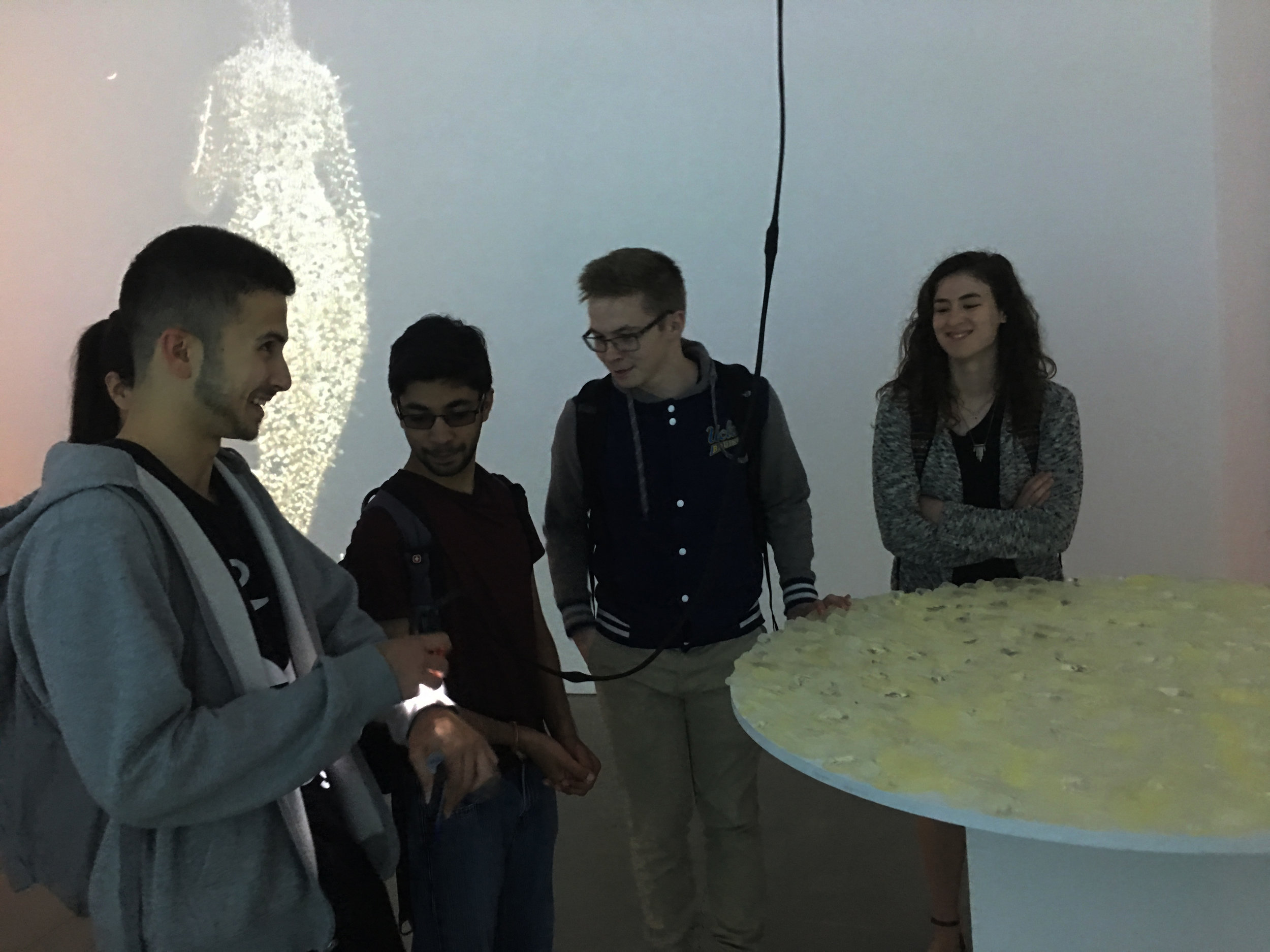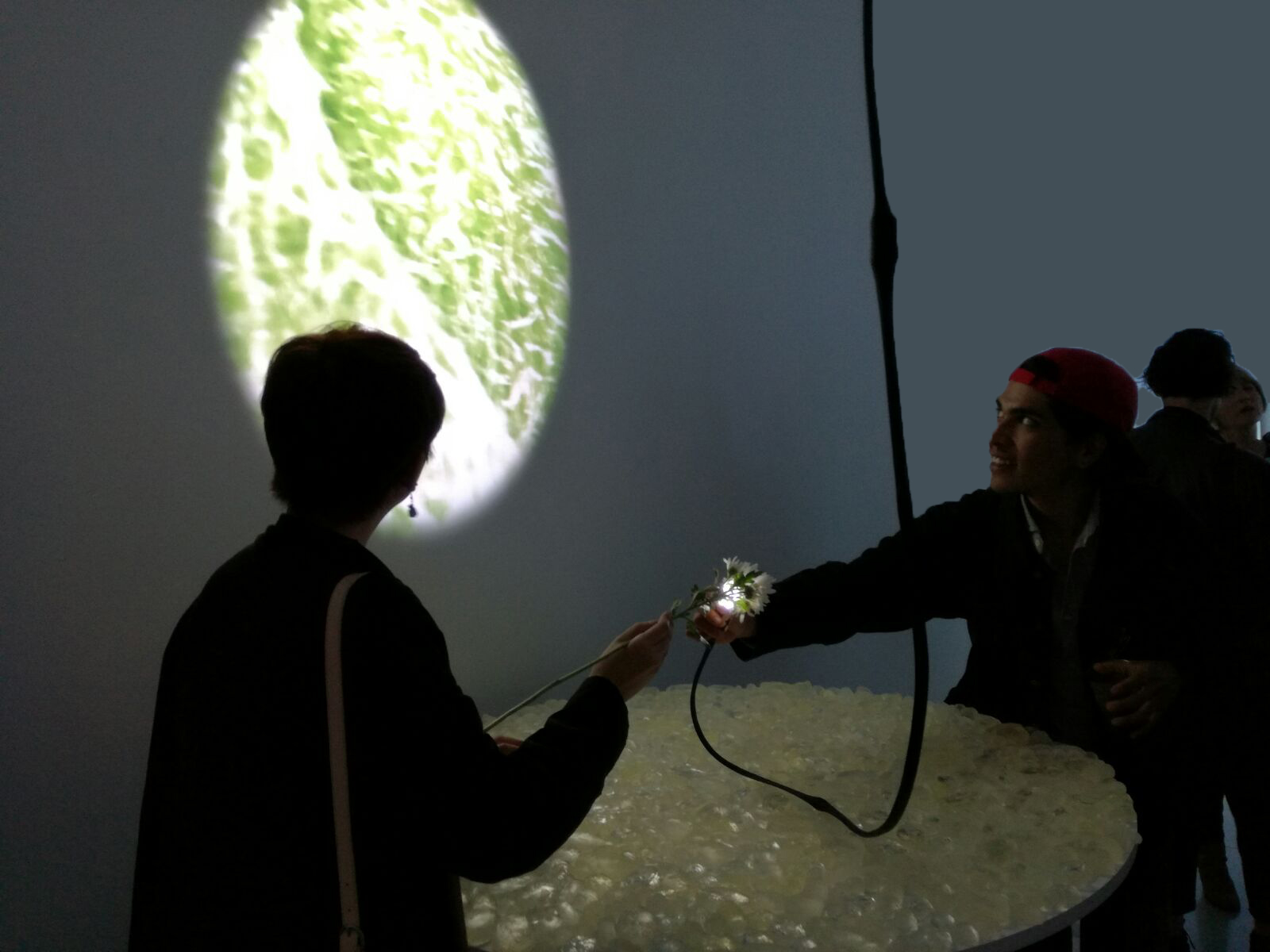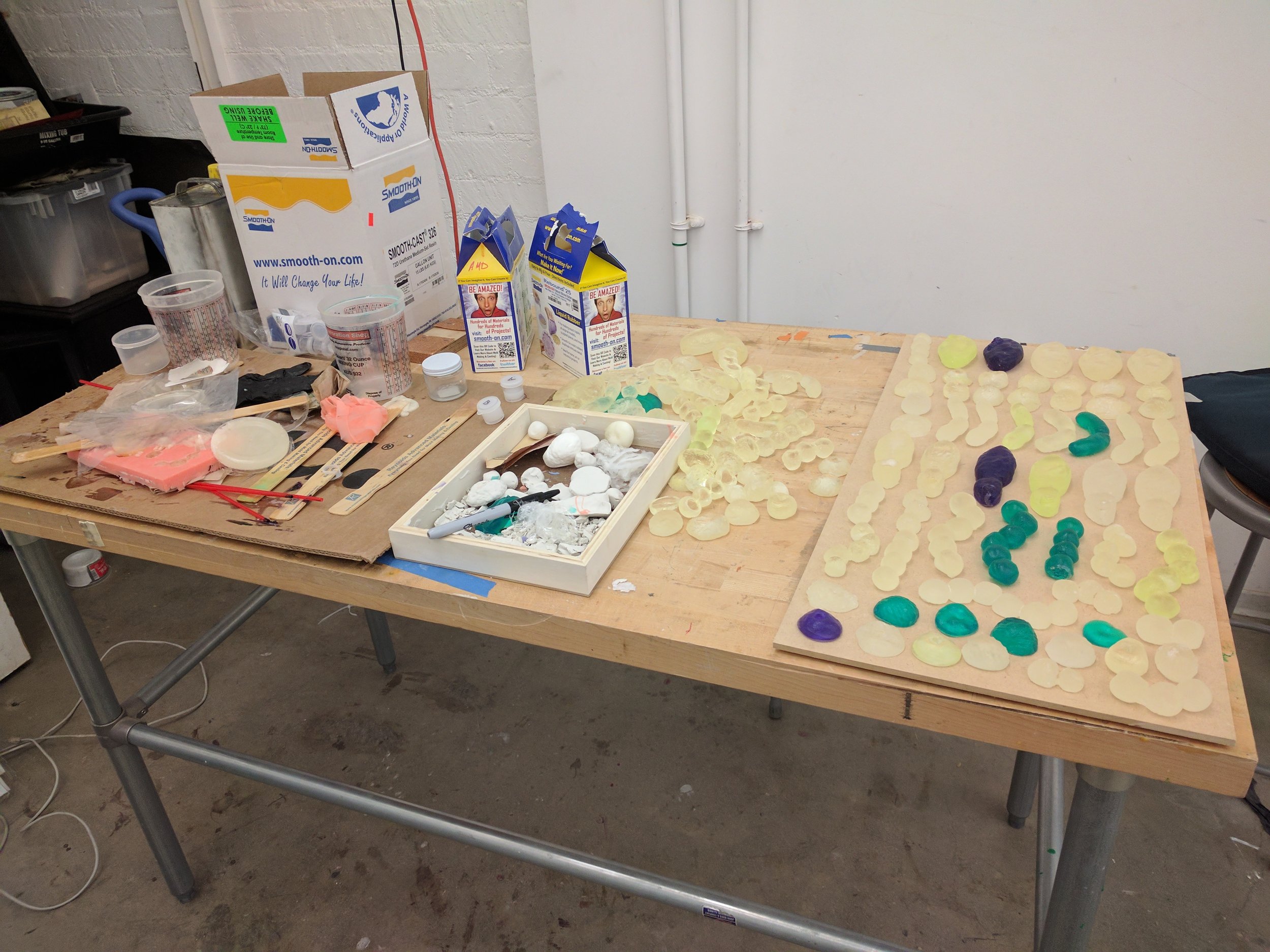Venus Iteration
2017
video projection, resin, digital microscope, custom interface, Max/MSP/Jitter
Sound Designer : Jen Agosta
Scientific Research Advisor : Dr.Dayan Wickramaratne
Venus Iteration explores the human body at micro and macro levels as an ecosystem full of trans-species entanglement. The human body contains ten times as many non-human microbial cells as human ones. Microbiome coexist with human cells, having symbiotic, pathogenic, and reciprocative relationships with them. In the large scale video projection, 3D models of representative species of microbiome have been digitally animated using Sandro Botticelli’s iconic Venus (c. 1485 C.E.) as the starting point. The video zooms into the newly created Venus and navigates the virtual ecological community inhabiting the body at the microbiological level. Next to the video projection, 3D microbes crafted into tangible objects are exhibited on a table, also inviting viewers to examine their bodies through a custom-made digital microscope. Imagery of the enlarged body parts is juxtaposed with a virtual ecosystem in real-time. Our inextricable entanglement with microscopic realms suggests that the human form is not a whole entity, but rather a place where fragmented entities coexist.
Fregmented Body
: Reimagining the human form within the postcolonial context
The Rebirth of Venus
I incorporated the figure of Venus into the digital world and reconfigured her in a very different context by creating a 3D model entitled 000Venus_final. The purpose was to satirize the biased representation of female body. When I mimicked the thin and long neck from the painting as manifestation of the exaggerated look that has been forced on women, certain types of glitches were generated. Those fragmented polygonal surfaces were not meant to be fixed as smooth surface, but to remain as glorious wounds. I removed her cumbersome curly hair, and changed her hands covering the genital area into an agitating gesture showing the middle finger. This newly created 3D Venus—000Venus_final, subverts the patriarchal expectations forced on women.
The coded images produced by media in the current digital age give prominence to the interface between the virtual and real. The body of 000Venus_final without physical materiality as 3D imagery becomes an interface, a space as a mediator, and a placeless place. Within the body of the 000Venus_final, 3D microbiome is constantly generated, fluctuating within this provocative body. The simulated 000Venus_final is located between spaces separated by the binaries of center and periphery, territory and deterritorialization. The empty space in the 000Venus_final, unoccupied by virtual microorganisms, suggests the boundary as a concept of an open space, which implies a wider array of change and possibility, rather than a negative space.
Animated Microbiome
By adopting scientific methodology, I composed the ecology of the virtual Venus, 000Venus_final, of five representative species of human microbiome: four bacteria and one fungus—Bacillus subtilis, Staphylococcus warneri, Streptococcus mitis, Acinetobacter calcoaceticus, and Saccharomyces cerevisiae—were reinterpreted and animated in the form of 3D polygons.
The direction, speed, and collision factors of these five microbiome species are determined by pre-programmed formulae. I coded the motility of the virtual microbial cells against real-world physiology. They collide, bounce, and go through each other, merge with one another, and subtract from and reflect others. In this pluralistic and unpredictable disorder, innumerable variables are created, and the structure is continually created and transformed and de-territorialized. The virtual camera zooms in on the metaphysics of the 3D Venus and navigates this digital ecological community.
Venus Iteration full video
Tangible Microbiome: MOO
The virtual microorganisms were hand-sculpted out of clay and duplicated—through molding and casting—multiple times. These mass-produced objects, entitled MOO, were cast with multiple combinations of chemicals—mostly synthetic resin. During this hands- on process, the microbiome was transplanted between hands, the clay objects, the molds, the castings, and the air. Through this diaspora of microbiome, various types of material were experimented with, contaminated, and blended, along with many molds that were produced, damaged, and fixed. The manufacture of MOO inhibits, relocates, and traverses various colonies. MOO connotes the evolutionary process of microbiome from the
mere presence to magnified images, to augmented 3D forms, and back to the tangible reality, being a hybrid between synthetic/natural and virtual/real. MOO was attached to a custom-made round table—approximately the size of a dinner table for four people. The surface of the objects became the interface for the other microbiomes—the audience through somatic interactions.
Intertwined Bodies
Just like having dinner around an ordinary table— constantly consuming other organisms, dismantling the bionomic environments of our bodies, transplanting body fluids, and interchanging our social and cultural experiences—the audience is invited to this microbiome luncheon to examine their bodies and those of others. The participants—the aggregations of microorganisms—experience the human body through the microscope and through complex interactions with each other and MOO. The imagery of enlarged body parts is juxtaposed with a virtual ecosystem in real-time, and the corporeality of the microorganism-objects provides tangible interactions with material agency, through which the participants are led to examine the body. The virtual images, the real-time video projection, the tangible objects, and the participants are all interwoven, manifesting the notion of the body as an aggregate of fragmented entities, and highlighting the fluctuating identity of the Venus. The installation deconstructs our conventional way of perceiving the human form in represented images, suggesting a new aesthetic experience and a way of recognizing the world.






















